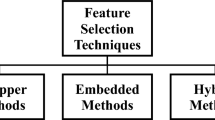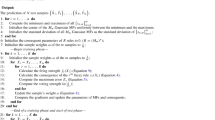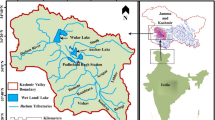Abstract
This paper addresses the critical challenge of accurately forecasting extreme wave heights, a crucial aspect for offshore operations often underexplored in existing literature. Employing a fuzzy-based cascade ensemble of regression models, our approach involves successive partitioning of training data into fuzzy-soft clusters, enabling specific regression models to analyze distinct segments of the target domain. Integration of individual model predictions into a fuzzy-based ensemble, with pertinence values assigned based on previous layer predictions, enhances accuracy by prioritizing certain events. The simplicity of our approach, eliminating the need for data balancing techniques, and its efficacy in predicting extreme wave heights with remarkable results distinguish it from existing methods. Since the optimal data partitioning is specific to the problem, an optimization strategy using two evolutionary algorithms as DE and CRO is employed to determine specific parameters of the methodology, including the number of membership functions, shapes of membership functions, and learning rate. This optimization strategy further enhances its performance, making it a promising solution for wave forecasting challenges.
This research has been partially supported by the project PID2020-115454GB-C21 of the Spanish Ministry of Science and Innovation (MICINN).
Access this chapter
Tax calculation will be finalised at checkout
Purchases are for personal use only
Similar content being viewed by others
References
Afzal, M.S., Kumar, L., Chugh, V., Kumar, Y., Zuhair, M.: Prediction of significant wave height using machine learning and its application to extreme wave analysis. J. Earth Syst. Sci. 132(2), 51 (2023)
Booij, N., Holthuijsen, L., Ris, R.: The" swan" wave model for shallow water. In: Coastal Engineering 1996, pp. 668–676 (1996)
Breiman, L.: Random forests. Mach. Learn. 45(1), 5–32 (2001)
Dixit, P., Londhe, S.: Prediction of extreme wave heights using neuro wavelet technique. Appl. Ocean Res. 58, 241–252 (2016)
Draper, N.R., Smith, H.: Applied regression analysis, vol. 326. John Wiley & Sons (1998)
Dysthe, K., Krogstad, H.E., Müller, P.: Oceanic rogue waves. Annu. Rev. Fluid Mech. 40, 287–310 (2008)
Falcao, A.F.d.O.: Wave energy utilization: a review of the technologies. Renew. Sustain. Energy Rev. 14(3), 899–918 (2010)
Fan, S., Xiao, N., Dong, S.: A novel model to predict significant wave height based on long short-term memory network. Ocean Eng. 205, 107298 (2020)
Feng, Z., Hu, P., Li, S., Mo, D.: Prediction of significant wave height in offshore china based on the machine learning method. J. Marine Sci. Eng. 10(6), 836 (2022)
Güner, H.A.A., Yüksel, Y., Çevik, E.Ö.: Estimation of wave parameters based on nearshore wind-wave correlations. Ocean Eng. 63, 52–62 (2013)
Huang, G.B., Zhu, Q.Y., Siew, C.K.: Extreme learning machine: Theory and applications. Neurocomputing 70, 489–501 (12 2006). https://doi.org/10.1016/j.neucom.2005.12.126
Peláez-Rodríguez, C., Pérez-Aracil, J., Prieto-Godino, L., Ghimire, S., Deo, R., Salcedo-Sanz, S.: A fuzzy-based cascade ensemble model for improving extreme wind speeds prediction. J. Wind Eng. Ind. Aerodyn. 240, 105507 (2023)
Pérez-Aracil, J., Camacho-Gómez, C., Lorente-Ramos, E., Marina, C.M., Cornejo-Bueno, L.M., Salcedo-Sanz, S.: New probabilistic, dynamic multi-method ensembles for optimization based on the cro-sl. Mathematics 11(7), 1666 (2023)
Petrov, V., Soares, C.G., Gotovac, H.: Prediction of extreme significant wave heights using maximum entropy. Coast. Eng. 74, 1–10 (2013)
Rueda, A., Camus, P., Méndez, F.J., Tomás, A., Luceño, A.: An extreme value model for maximum wave heights based on weather types. J. Geophys. Res.: Oceans 121(2), 1262–1273 (2016)
Shamshirband, S., Mosavi, A., Rabczuk, T., Nabipour, N., Chau, K.w.: Prediction of significant wave height; comparison between nested grid numerical model, and machine learning models of artificial neural networks, extreme learning and support vector machines. Eng. Appl. Comput. Fluid Mech. 14(1), 805–817 (2020)
Shi, Q., Katuwal, R., Suganthan, P.N., Tanveer, M.: Random vector functional link neural network based ensemble deep learning. Pattern Recogn. 117, 107978 (2021)
Storn, R., Price, K.: Differential evolution-a simple and efficient heuristic for global optimization over continuous spaces. J. Global Optim. 11(4), 341–359 (1997)
Ti, Z., Li, Y., Qin, S.: Numerical approach of interaction between wave and flexible bridge pier with arbitrary cross section based on boundary element method. J. Bridg. Eng. 25(11), 04020095 (2020)
Viselli, A.M., Forristall, G.Z., Pearce, B.R., Dagher, H.J.: Estimation of extreme wave and wind design parameters for offshore wind turbines in the gulf of maine using a pot method. Ocean Eng. 104, 649–658 (2015)
Zilong, T., Wei, D.X.: Layout optimization of offshore wind farm considering spatially inhomogeneous wave loads. Appl. Energy 306, 117947 (2022)
Zilong, T., Yubing, S., Xiaowei, D.: Spatial-temporal wave height forecast using deep learning and public reanalysis dataset. Appl. Energy 326, 120027 (2022)
Author information
Authors and Affiliations
Corresponding author
Editor information
Editors and Affiliations
Rights and permissions
Copyright information
© 2024 The Author(s), under exclusive license to Springer Nature Switzerland AG
About this paper
Cite this paper
Peláez-Rodríguez, C., Cornejo-Bueno, L., Fister, D., Pérez-Aracil, J., Salcedo-Sanz, S. (2024). Prediction of Extreme Wave Heights via a Fuzzy-Based Cascade Ensemble Model. In: Ferrández Vicente, J.M., Val Calvo, M., Adeli, H. (eds) Bioinspired Systems for Translational Applications: From Robotics to Social Engineering. IWINAC 2024. Lecture Notes in Computer Science, vol 14675. Springer, Cham. https://doi.org/10.1007/978-3-031-61137-7_30
Download citation
DOI: https://doi.org/10.1007/978-3-031-61137-7_30
Published:
Publisher Name: Springer, Cham
Print ISBN: 978-3-031-61136-0
Online ISBN: 978-3-031-61137-7
eBook Packages: Computer ScienceComputer Science (R0)




